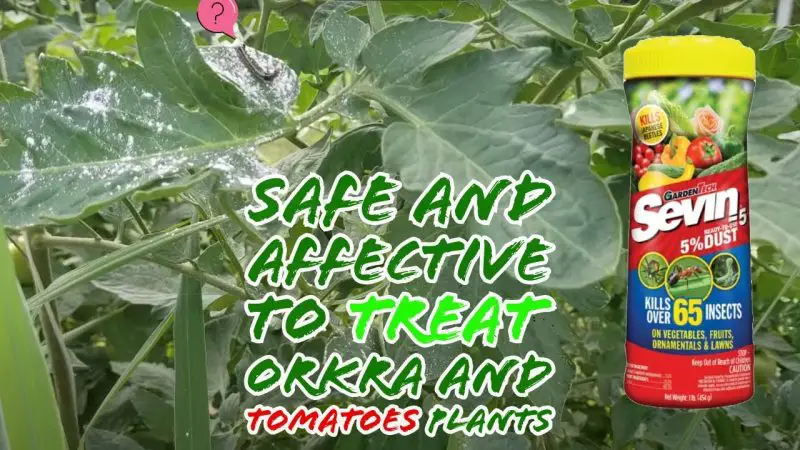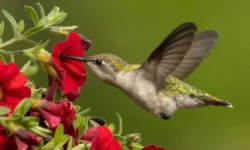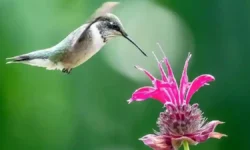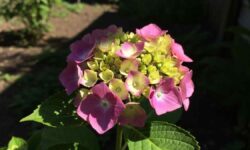Sevin Dust, a widely recognized insecticide, has been a staple in home gardening and agriculture for decades. It is known for its effectiveness in controlling a broad range of garden pests, from beetles and worms to aphids and mites. The active ingredient in traditional Sevin Dust is carbaryl, a chemical compound that targets the nervous systems of insects, leading to quick results. However, newer formulations may now use zeta-cypermethrin, a synthetic pyrethroid, offering a slightly different mode of action with similar efficacy.
What makes Sevin Dust popular among gardeners is its ease of application and its long-lasting protective barrier on plants. Unlike liquid sprays that can wash off quickly, Sevin Dust adheres to leaves, stems, and fruit, allowing it to remain effective even after a light rain. This residual action helps prevent re-infestations, which is particularly valuable when dealing with persistent pests on high-yield crops like tomatoes.
When considering its use on edible crops, it’s essential to understand both the benefits and the limitations of Sevin Dust. While it can be a powerful tool against pests, it must be used with care to avoid negative impacts on beneficial insects, human health, and the environment. Following label directions and understanding the specific needs of your tomato plants is critical for safe and effective pest control.
Table of Contents
Identifying Common Tomato Plant Pests

Tomato plants are highly attractive to a wide array of garden pests, which can wreak havoc on leaves, stems, flowers, and fruit. Among the most common intruders are hornworms, aphids, whiteflies, flea beetles, and stink bugs. These pests not only cause physical damage but can also spread bacterial and viral diseases that stunt growth and reduce yield.
Tomato hornworms are perhaps the most notorious, with their large green bodies blending seamlessly into the foliage. They can strip leaves quickly, reducing the plant’s ability to photosynthesize. Aphids and whiteflies feed on plant sap, leading to curled leaves and a sticky residue known as honeydew, which attracts sooty mold. Flea beetles chew small holes in leaves, and stink bugs pierce tomatoes, leaving behind unsightly marks and making fruit unmarketable.
Early detection of these pests is key to preventing infestations from escalating. Observing changes in leaf texture, discoloration, and the presence of droppings or eggs on the underside of leaves can help you act swiftly. Once pests are identified, selecting the appropriate control method, such as Sevin Dust, becomes a vital next step.
How Sevin Dust Works on Tomato Plant Pests
Sevin Dust functions as a contact and ingestion insecticide, which means it works when insects crawl over or consume the treated surfaces of the plant. Once applied, the active compound either paralyzes or kills the pests by interfering with their nervous system. This rapid mode of action is particularly helpful for high-value crops like tomatoes, where swift pest control is crucial to protect both foliage and developing fruit.
When applied to tomato plants, Sevin Dust clings to the plant surfaces, including the undersides of leaves where pests often hide. The powdery texture allows it to cover large areas evenly, creating a defensive layer that remains effective for several days. This protection is especially valuable during peak pest seasons when multiple generations of insects may emerge in quick succession.
It’s important to note that Sevin Dust is a non-selective insecticide, meaning it can harm beneficial insects such as bees, ladybugs, and lacewings. Therefore, application timing and method are critical to minimize the impact on pollinators and garden allies. Applying Sevin Dust during the early morning or late evening, when bees are less active, is one strategy to reduce collateral damage.
Proper Application Techniques for Tomato Plants
To achieve optimal results, applying Sevin Dust to tomato plants requires a careful and deliberate approach. Begin by reading the product label thoroughly to ensure your specific formulation is approved for use on edible crops like tomatoes. The label provides valuable information on pre-harvest intervals, maximum usage frequency, and safety precautions.
Before applying the dust, make sure the plants are dry and free of dew. This ensures the powder adheres effectively to the surfaces. Gently shake or use a hand duster to distribute a light, even coating of the dust across the leaves, stems, and fruit. Avoid overapplying, as excessive buildup can wash off more easily or harm plant tissues.
Pay particular attention to the undersides of leaves and the base of the plant, as many pests tend to gather in these hidden areas. Be cautious not to inhale the dust or allow it to drift onto nearby desirable plants or water sources. Wearing gloves and a face mask during application is recommended, especially in windy conditions.
Safety Concerns and Health Considerations
Although Sevin Dust is approved for use on certain vegetable crops, including tomatoes, safety remains a top priority. Exposure to carbaryl or other active ingredients in Sevin Dust can pose health risks if not handled correctly. Direct contact with skin or inhalation of the dust can cause irritation or respiratory issues, particularly for children and pets.
To protect yourself and others, always wear protective clothing during application and store the product in a secure location away from food, water, and children’s reach. If applying the dust in a greenhouse or enclosed area, make sure there is adequate ventilation. After handling the product, wash your hands thoroughly before eating or drinking.
Another crucial safety step is adhering to the pre-harvest interval (PHI), which indicates how many days must pass between application and harvesting the tomatoes. This waiting period allows any chemical residues to degrade, making the fruit safe for consumption. Skipping this step can lead to unintentional ingestion of harmful compounds.
Environmental Impacts of Using Sevin Dust
While effective at controlling pests, Sevin Dust can have unintended consequences for the surrounding environment. Its non-selective nature means that beneficial insects such as bees and butterflies may also be affected. These pollinators are essential to maintaining a healthy garden ecosystem and ensuring the production of fruit-bearing crops.
Runoff from rain or irrigation can carry the dust into nearby water sources, potentially harming aquatic life. Soil health can also be affected if the product accumulates over time, disrupting the balance of microorganisms that support plant growth. Responsible use of Sevin Dust involves minimizing these risks through targeted applications and avoiding unnecessary use.
To reduce environmental impact, consider integrating Sevin Dust into a broader Integrated Pest Management (IPM) strategy. This approach combines chemical treatments with cultural, mechanical, and biological methods, creating a more sustainable way to manage pests without relying solely on insecticides.
Alternatives to Sevin Dust for Organic Tomato Growers
For gardeners pursuing organic or environmentally friendly practices, alternatives to Sevin Dust are available. Natural pest control methods include neem oil, insecticidal soaps, and diatomaceous earth, all of which offer targeted pest control without the use of synthetic chemicals. While these options may require more frequent applications, they pose less risk to beneficial insects and soil health.
Introducing predatory insects, such as ladybugs or parasitic wasps, can also help keep pest populations under control. Companion planting with herbs like basil, marigold, and nasturtium can deter insects naturally through scent or visual distraction. Physical barriers such as row covers or netting provide yet another layer of defense without chemicals.
Choosing resistant tomato varieties is another proactive measure. Some cultivars are bred to withstand common diseases and pests, reducing the need for intervention. Regular monitoring and early intervention are key regardless of the method chosen, allowing you to maintain healthy plants without compromising safety or sustainability.
Timing and Frequency of Sevin Dust Applications
The success of Sevin Dust depends greatly on timing and frequency of use. Applying the product too early in the season may be unnecessary, while applying it too late might not stop a well-established infestation. The ideal time to dust your tomato plants is at the first visible sign of pest activity. Watch for chewed leaves, visible insects, or sticky residue, all indicators that action is needed.
Frequency of application should also be guided by the product label. Most formulations recommend no more than seven applications per season, with several days between treatments. Overuse can lead to pesticide resistance among pests, reducing the effectiveness of Sevin Dust over time. It can also increase residue levels on fruit, raising health concerns.
Weather conditions should also influence application timing. Avoid using Sevin Dust before heavy rain, as the product can wash off and become less effective. Likewise, wind can carry the dust away from its intended target or pose inhalation risks. Early morning or evening, when temperatures are cooler and wind is calm, is generally the best time to apply.
Recognizing Signs of Overuse and Chemical Sensitivity
While Sevin Dust is a valuable pest control tool, overusing it can lead to a range of problems. Plants that receive repeated applications may show signs of stress, including leaf burn or discoloration. These symptoms often result from chemical buildup on plant surfaces, especially if the dust is not washed away between applications.
Another concern is the potential for pests to develop resistance. Just like with antibiotics in humans, repeated exposure to the same chemical can allow certain insects to evolve defenses against it. If you notice pests returning even after multiple treatments, it may be time to rotate to a different mode of action or consider integrated methods.
Human and pet sensitivity to Sevin Dust should also be monitored. If anyone experiences headaches, nausea, or respiratory issues after application, discontinue use and seek medical guidance. It’s wise to keep children and animals away from treated areas until the dust has fully settled and the PHI has passed.
Harvesting Tomatoes After Sevin Dust Application
Knowing when and how to safely harvest tomatoes following Sevin Dust use is essential to protect your health. Each Sevin Dust product will include a specific pre-harvest interval, which generally ranges from 1 to 3 days for tomatoes, depending on the formulation. This waiting period allows any chemical residues to degrade to safe levels.
Before harvesting, inspect the fruit for any visible dust residue. Washing tomatoes thoroughly under running water is a good practice to remove any lingering particles. You may also consider peeling the tomatoes if residue remains visible or if you’re particularly sensitive to chemicals.
Storage of harvested tomatoes should follow normal food safety guidelines. Keeping them in a cool, dry place or refrigerating ripe fruit can prevent spoilage and ensure you’re consuming the safest possible produce. Label your harvesting dates if you’re managing multiple tomato plants treated at different times, helping you avoid accidental early consumption.
Integrating Sevin Dust into a Broader Garden Strategy
Relying solely on Sevin Dust for pest control can be limiting. A more holistic approach often yields better long-term results. Regular garden maintenance, including removing dead leaves, weeding, and rotating crops, helps reduce pest habitats and breeding grounds. Healthy plants are naturally more resilient to pest attacks and recover more quickly from damage.
Introducing biodiversity into your garden encourages natural pest control. Birds, frogs, and predatory insects all play roles in keeping pest populations in check. By creating a balanced environment, you may find that the need for chemical interventions decreases over time.
Keeping a garden journal can help track pest outbreaks, treatments applied, and harvest dates. Over several seasons, this information becomes invaluable for adjusting your methods and improving outcomes. Whether you choose to use Sevin Dust occasionally or as part of a larger plan, informed decisions lead to healthier plants and more abundant harvests.
FAQs About Using Sevin Dust on Tomato Plants
Can Sevin Dust be used on tomato plants safely?
Yes, when used according to label instructions, Sevin Dust is approved for use on tomato plants and can effectively control many common garden pests.
How long after applying Sevin Dust can I harvest tomatoes?
Most Sevin Dust products have a pre-harvest interval of 1 to 3 days. Always check your product’s label for the exact waiting period before harvesting.
Is it harmful to bees and beneficial insects?
Yes, Sevin Dust is non-selective and can harm bees and other beneficial insects. Apply it during times when pollinators are inactive, such as early morning or late evening.
What are some natural alternatives to Sevin Dust?
Neem oil, insecticidal soap, diatomaceous earth, and introducing predatory insects are effective alternatives that are safer for the environment.
Can I wash Sevin Dust off tomatoes before eating?
Yes, always wash tomatoes thoroughly under running water before consuming. Peeling may be helpful if residue remains after washing.






